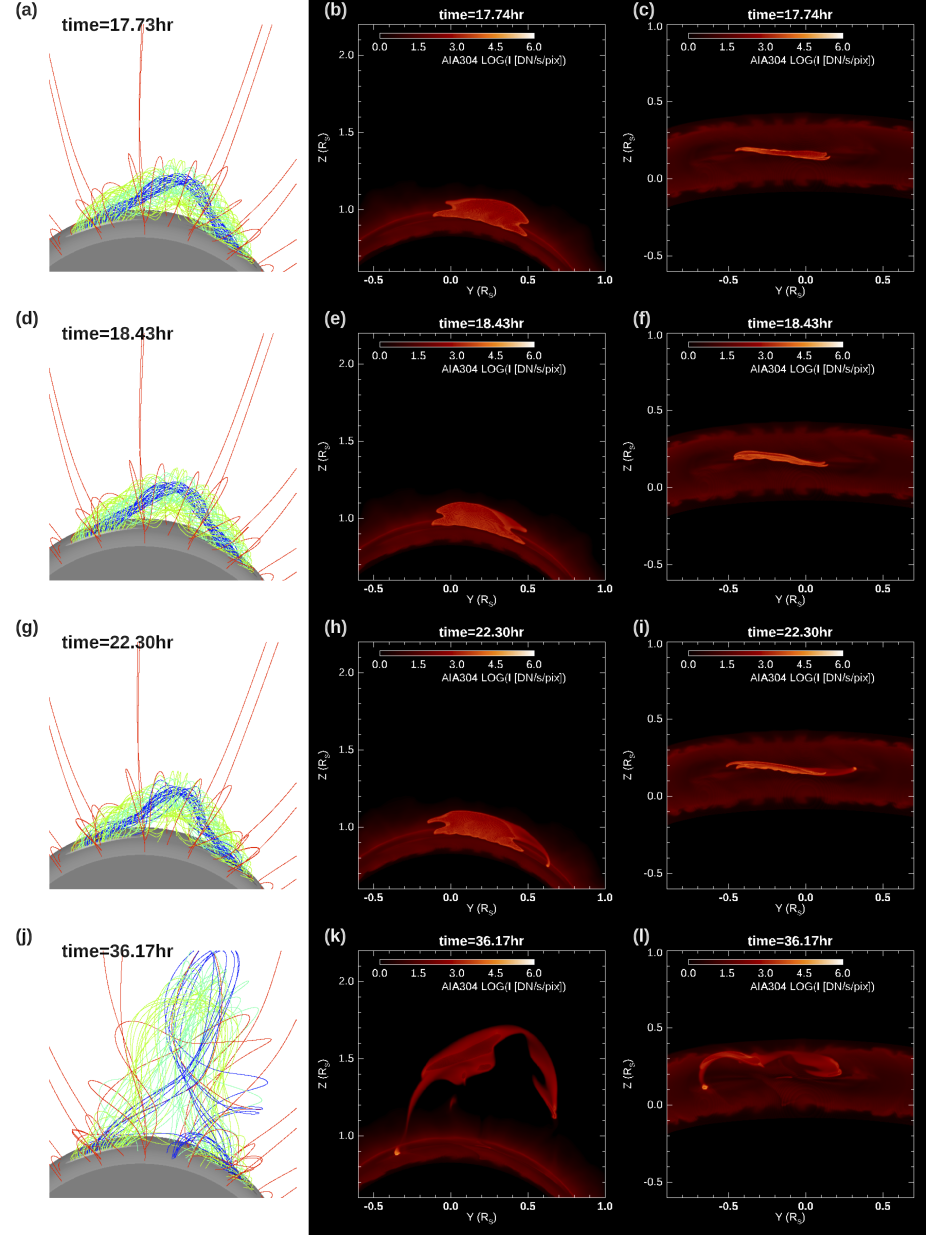Publication: The Astrophysical Journal; HAO Author: Yuhong Fan
We present magnetohydrodynamic (MHD) simulations of the evolution from quasi-equilibrium to eruption of a prominence-forming twisted coronal flux rope under a coronal streamer. The prominence condensations form at the dips of the twisted flux rope due to run-away radiative cooling. We have compared the cases with and without the formation of prominence condensations, and the case where prominence condensations form but we artificially initiate the draining of the prominence by lowering the pressure at one footpoint of the flux rope. We find that the prominence weight has a significant effect on the stability of the flux rope, and can significantly increase the loss-of-equilibrium height of the flux rope.

An MHD simulation of the evolution of a prominence-forming twisted coronal flux rope, for which large amplitude longitudinal (LAL) oscillations are excited during the quasi-static rise phase, followed by prominence draining towards the flux rope foot-points and the eventual eruption of the flux rope and the prominence. The left column shows snapshots of the 3D magnetic field lines, and the middle and right columns show the synthetic SDO/AIA 304 emission images as viewed from 2 different perspectives. Similar evolution where prominence eruption is preceded with LAL oscillations and draining have been seen in observations.
The flux rope can be made to erupt earlier by initiating draining of the prominence mass. We also performed a simulation where large amplitude longitudinal oscillations of the prominence are excited during the quasi-static phase. We find that the gravity force along the magnetic field lines is the major restoring force for the oscillations, in accordance with the "pendulum model", although the oscillation periods are higher (by about 10\% to 40\%) than estimated from the model because of the dynamic deformation of the field line dips during the oscillations. The oscillation period is also found to be slightly smaller for the lower part of the prominence in the deeper dips compared to the upper part in the shallower dips. The oscillations are quickly damped out after about 2-3 periods and are followed by prominence draining and the eventual eruption of the prominence. However we do not find a significant enhancement of the prominence mass draining and earlier onset of eruption with the excitation of the prominence oscillations compared to the case without.
Link to paper: Simulations of Prominence Eruption Preceded by Large-amplitude Longitudinal Oscillations and Draining